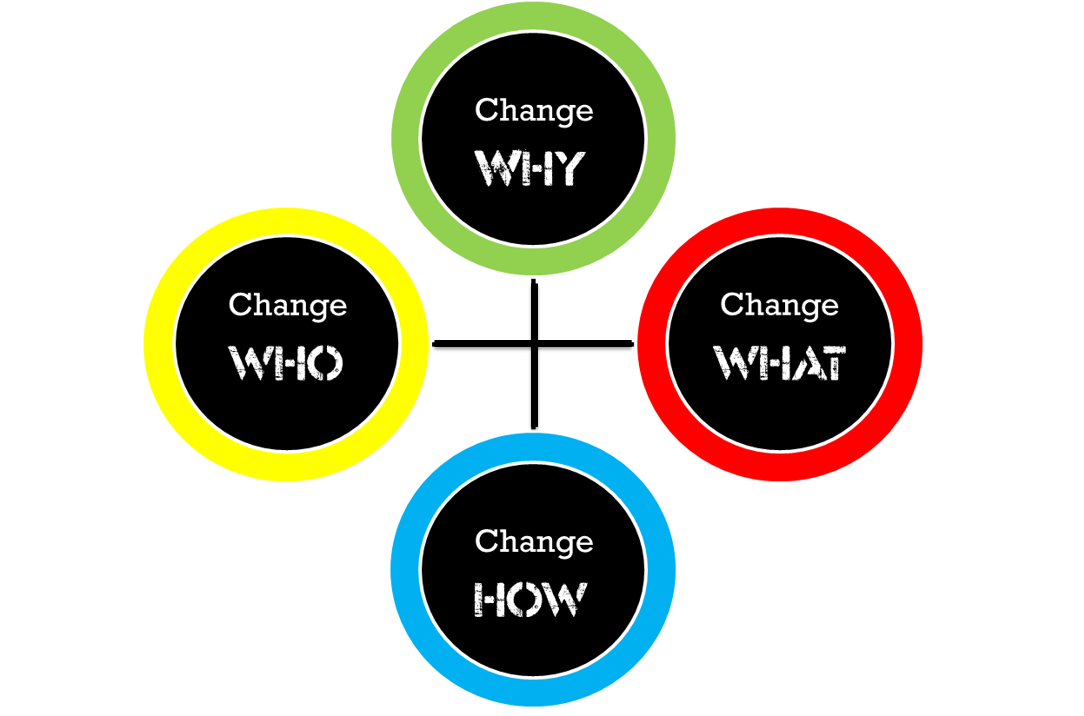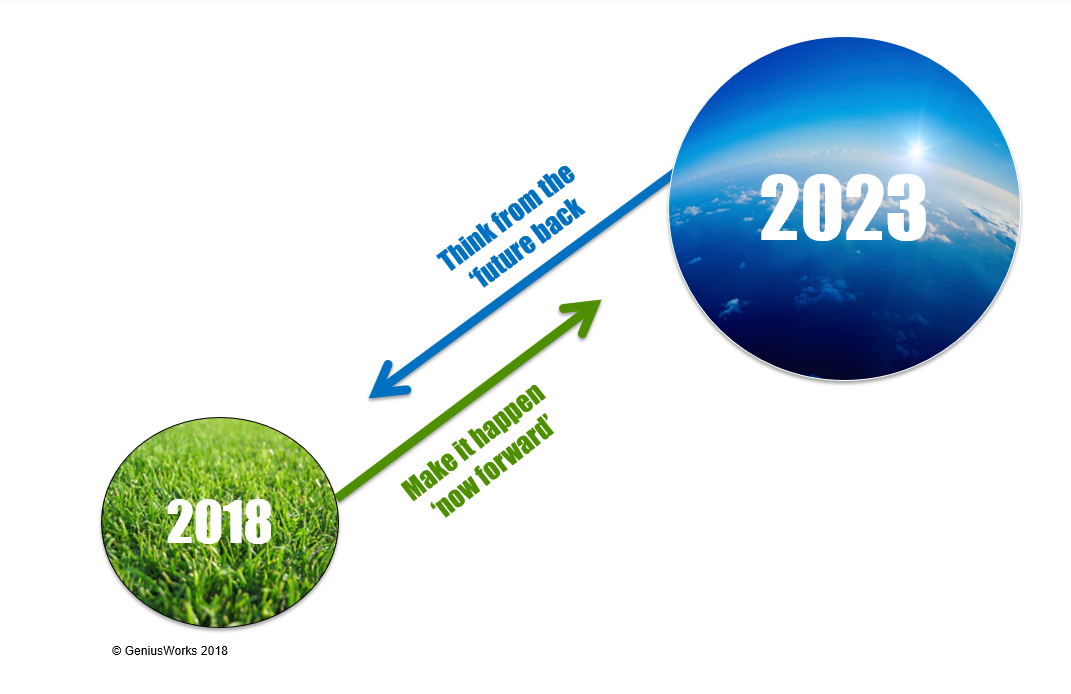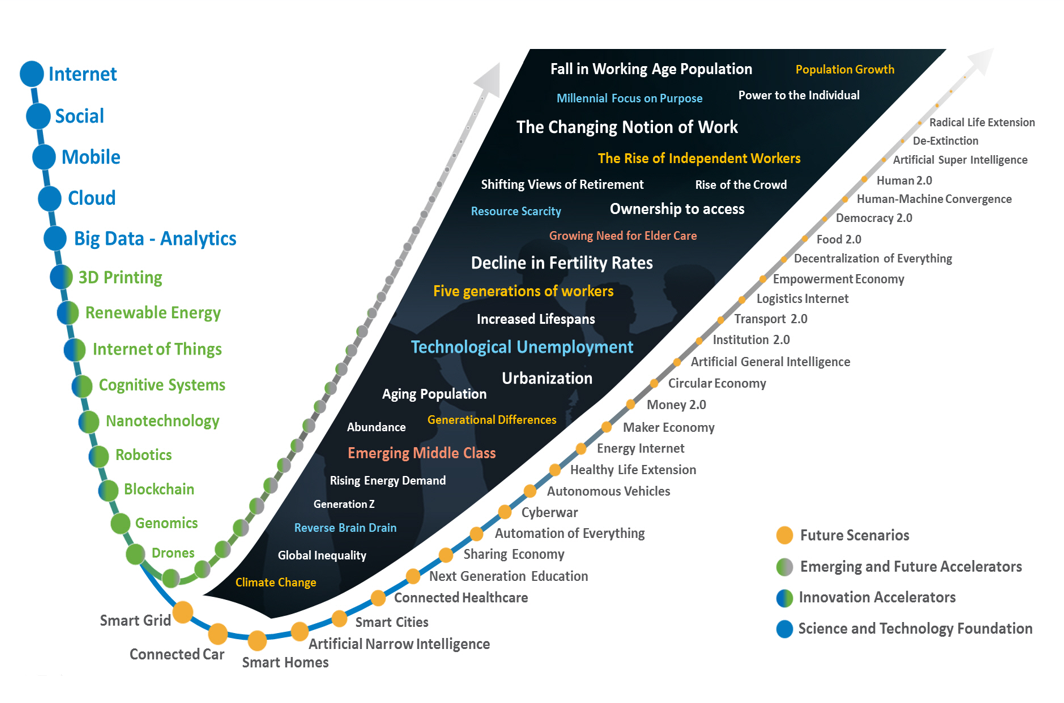
What it means to be a Gamechanger in times of Radical Innovation: A Q&A with Peter Fisk
What is the DNA of a “Gamechanger” and what are the traits that make them think and act differently?
“Gamechanger” businesses see the world differently. They don’t just seek to imitate the success of others, to compete in the markets of today, to frame themselves by their relative differences to competitors. Instead they play their own game.
So what’s the “game”? In simple terms, it’s the market.
These companies go beyond innovating their products and services, their customer experiences and business models. They seek to innovate how their markets work.
Think of it like a sports game. How could you change the game? It could be anything from the pitch dimensions to rules of play, the team composition to the measures of success, the role of the referee to the participation of fans. Even the name of the game.
Now look at today’s most disruptive innovators – 23andMe to Airbnb, Brewdog to Buzzfeed, Casper to Coursera – they reframe, reimagine and redefine the market on their terms – who is it for, why people buy, what they pay and get, and how they work.
I’ve met and profiled over 250 “gamechanger” companies over the last 24 months, in almost every sector, and in every part of the world. Corporate giants and start-ups, from Abu Dhabi to Berlin, Colombo to Qingdao. There is no one way to change the game, but there are definitely some common traits:
- Audacious – Gamechangers are visionary and innovative, but also daring and original; they seek to shape the future to their advantage.
- Purposeful – They seek to make life better, in some relevant and inspiring way; they have a higher motive than just making money.
- Networked – Gamechangers harness the power of networks, digital and physical, both business and customer networks, to exponentially reach further faster.
- Intelligent – They use big data analytics and algorithms, machine learning and AI, to be smart and efficient, personal and predictive.
- Collaborative – Gamechangers work with others, from ecosystems to platforms, social networks and co-creation, to achieve more together.
- Enabling – They focus not on what they do, but what they enable people to do; and thereby redefine their marketspace, find new opportunities and redefine value.
- Commercial – Gamechangers take a longer-term perspective, adopting new business models, and recalibrating the measures of progress and success.
What does it mean to be a CEO in this way of thinking and doing, the attitudes and skills needed to make the difference?

There are two types of leaders – “gamechanger” leaders need a future mindset
Today’s business leaders need a future mindset.
That sounds obvious but isn’t. Most leaders have a “fixed mindset”. They keep stretching the old models of success. They stay loyal to the model that made them great, seeking to squeeze and tweak it for as long as possible. They seek perfection – to optimize what they currently do – which leads to efficiency and incremental gains.
Instead a “future mindset” is prepared to let go of the past. To explore the future, to experiment with new ways of working and winning. Failure is a way to learn, and innovation becomes the norm. Change is relentless inside, as it is outside. Innovation is their lifeblood.
With a future mindset, the CEO needs new attributes:
Sense maker – to interpret a fast and confusing world, to see new patterns and opportunities, what is relevant and not, to shape your own vision.
Radical optimist – to inspire people with a stretching ambition, positive and distinctive, to be audacious, to see the possibilities when others only see risk.
Future hacker – they start from the “future back”, with clarity of purpose and intent, encouraging ideas and experiments, leveraging resource and scale.
Ideas connector – da Vinci said innovation is about making unusual connections; connecting new people, new partners, new capabilities and new ideas.
Emotionally agile – whilst organisational agility is essential, emotional agility matters even more; to cope with change, to be intuitive in making sense, and making choices.
Entrepreneur at large – keeping the founders mentality alive, hands-on working with project teams to infuse the mindset, to be the catalyst and coach.
Having grit – “gamechanger” leaders need to go against the grain, to persist but know when to move on, to have self-belief and confidence, guts and resilience.
How can organizations apply this thinking to better create innovative strategies for business and brands?
Start from the “future back”.
Trying to evolve in today’s complex and confused world is unlikely to lead you towards a bright and distinctive future. It will extend your life a little longer, but it will be tough and uninspiring, with diminishing returns.
Instead jump to the future. I tend to start with five years ahead, although it may differ by company. 5 years is long enough to change the world, but close enough to be real. Start by creating a positive, collective, and inspiring vision of the future market.
What will it be like? What will people want? Why? How? Where? Then consider how to win in this new world.

Infinite ways to “change the game” – to reinvent how your market works
This is where “moonshot thinking” can be really useful. “Why be 10% better, when you could be 10 times better?” 10 times more profits, more customers, more quality, reduced cost, reduced time. Whatever. By giving yourself a “How could we do it 10x better” challenge you take a new perspective, solve problems in different ways.
Be inspired by ideas from other places.
Explore how ARM or GE, Inditex or Netflix, Glossier or Novo Nordisk have changed their markets. Choose any of my 100+ “gamechanger” companies! How did they do it? How did customers respond? Remember, they often serve the same customers as you! You can’t learn much from competitors, but you can learn a lot from relevant parallels.
Copy. Adapt. Paste.
Customer insight also matters. Deep dives and design thinking, exploring the emerging trends and deviant behaviours. This can enhance and validate your ideas, but the problem with most customer insight is that it is filtered by our current world. You need something to disrupt your thinking.
I have a great box of disruptive techniques. Some are really simple – like break then remake the rules, like imagine its free then find a way to make money, like reverse polarities and many more. The point is to disrupt your conventional thinking.
From this, ideas rapidly emerge. You need lots of ideas about the future. But these are fragments of the real answer. The real creativity comes in fusing together into bigger “concepts”. These could be customer solutions, or new ways of working, new revenue streams, or new business models, and new market scenarios.
Once you have a clear and collective ambition for the future, it’s time to work backwards. “If this is how we want to be in 5 years, where do we need to get to in 3 years, and then in 1 year? Therefore what do we need to start doing now?” You develop a “horizon plan” for your business; a strategy roadmap if you like, but developed backwards.

“Future back” thinking … start from an inspiring future, then work backwards
The important thing is that by working backwards, you have jumped out of the morass of today. You’ve avoided the assumptions, limitations, problems and priorities of today’s thinking. You have a more inspiring “gamechanging” future and have started to map out the steps to get there. Most likely with different priorities in the short-term too.
Of course, the steps on this journey might change, but it’s going to be an exciting adventure.
How do these organizations fuse digital and physical, global and local, ideas and networks?
These are artificial divides. They illustrate how our thinking within business, has created separate and apparently conflicting approaches. The opportunity is to make these “fusions” matter – to be innovative in the way you combine apparent opposites.
Digital and physical are two sides of the same coin.
There is only one world, unless you believe Ray Kurzweil, and it is the real one. It’s human and physical. Digital technologies are incredibly powerful, enabling people to connect, to work, to learn, to play in new ways. From mobile phones to blockchains, 3D printing and augmented reality, digital allows us to do more, do it faster, do things we could never do before. But it’s still about humanity.
Start with people. How can you enable them to achieve more? To live better, to have more fun, to do better for the world. Whatever matters. I work closely with Richard Branson and his Virgin teams. Their mindset is to “start from the outside, and then work in”. Design a better customer experience. Built on your ambition and insight, and then explore how you could deliver it with new and existing capabilities.
Global and local are opportunities for every business.
We can all see a backlash in society against relentless globalisation, huge corporations, and social inequality. We see a lack of trust in brands and know that authenticity matters. Etsy shows us that even the smallest and most local artisan businesses can also be global. For every business, local and global markets are within reach, however it’s also about combining scale and standardisation, with relevance and individuality.
Ideas and networks should be the core of your business.
Gamechanger businesses need a compelling idea, a core purpose, an inspiring proposition, that can spread fast and contagiously. In a digitally-fueled world, the most innovative businesses embrace “ideas and networks” to drive exponential impact – like WhatsApp creating $19bn in three years, Airbnb $40bn in 9 years, Alibaba $476bn in 18 years.
Think about that concept of “exponential” …
The power of networks – be it franchisees, or distributors, or customers and users – lies not in the number of members, but in the connections between them. Networks have a multiplying effect. Exponential. Consider, for example, Rapha, the sportwear brand that brings together people with a passion for cycling, who conveniently meet at their “Cycle Club” stores and buy their premium gear. A fantastic “ideas and networks” business.
What are the secrets to success in creating gamechanger cultures and organizations in the connected economy?
We live in an incredible time. More change in the next 10 years than in the last 250 years.
New technologies are transforming the ways in which we live and work. Technologies enable incredible change. It is how we unlock their potential that matters.
Digital platforms connecting buyers and sellers in new ways, blockchain having the potential to transform relationships and trust, 3d printing having the potential to transform value chains to deliver anything personalised and on-demand, AI and robotics giving us the capabilities to be superhuman in our minds and bodies.

New technologies + changing society = new innovation spaces (Source: WEF 2018)
These are just some of the fantastic new capabilities that enable us to innovate beyond what we can even imagine today. The future isn’t like the future used to be. We cannot just evolve or extrapolate the past. Today’s future is discontinuous, disruptive, different.
It is imagination that will move us forwards … unlocking the technological possibilities, applying them to real problems and opportunities, to drive innovation and growth in every industry, in every part of our lives.
Imagine a world where you press “print” to get the dress of your dreams, the food of your fantasies, or the spare parts for your car. Instantly, personalised and on demand. Think then what does that mean if we don’t need the huge scale of manufacturing plants, warehousing and transportation. Maybe we will even subscribe to the IP catalogues of brands, rather than buy standard products, in the ways we currently subscribe to Netflix.
Time to embrace your Musk mindset … Unlock your Einstein dreams and Picasso passion … Embrace your Mandela courage and Ghandi spirit. Be more curious, be more intuitive, be more human. Ask more questions. Don’t be afraid to have audacious ideas, to challenge the old models of success, and turn future ambitions into practical profitable reality.
How else did Zespri reinvent the Chinese gooseberry as the kiwi fruit? How else will SpaceX reach Mars by 2025? How else did Netflix came to be, or NuTonomy, or Nespresso, or Nyx?
This is why 23andMe’s Anne Wojicki won’t give up in her quest to make DNA analysis available to everyone, and to ultimately find a cure for cancer. And its why Jack Ma didn’t give up as he rose from $1000-per year English teacher to technological royalty.
The secret is the future mindset.
To realize that the future is malleable. So we need to grab hold of it, and shape it in our own vision. To our advantage.
This is what “gamechangers” do.
Are you ready?
Peter Fisk is a global thought leader on growth, innovation and leadership. He is founder of GeniusWorks, a business innovation company, based in London; Professor of strategy, innovation and marketing at IE Business School in Madrid; and Thinkers50 Global Director. From nuclear phyics to managing the Concorde brand, he has 35 years of practical business experience, working with business leaders in over 300 companies and 55 countries. He is author of 7 bestselling books, including the most recent, “Gamechangers: Are you ready to change your world?”. More at www.theGeniusWorks.com




